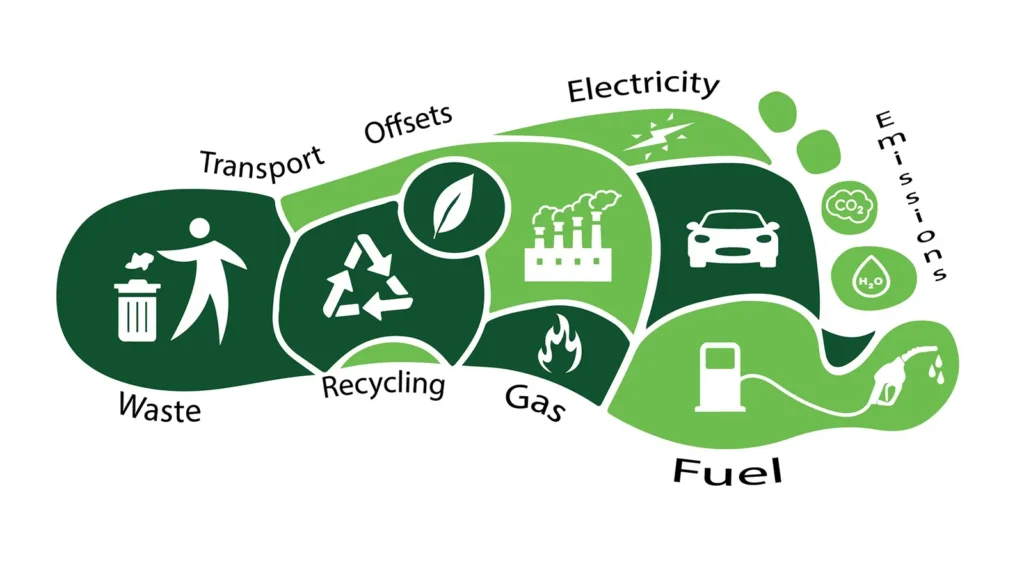Mastering the Art of Eco-Conscious Living: Your Guide to Reducing Carbon Footprint in Every Aspect of Life

Looking to shrink your carbon footprint? Whether it’s dining, traveling, or keeping your home cozy, each activity emits carbon dioxide and other greenhouse gases. But fear not, there are ways to make eco-friendlier choices.
What exactly is a carbon footprint? It’s the measure of the impact an activity, individual, or nation has on climate change through the emission of greenhouse gases. From that morning coffee to your evening commute, everything adds up.
Why should you care? With the world’s population projected to soar to 9.7 billion by 2050 and beyond, our consumption habits are taking a toll on the planet’s resources. More people mean more emissions and resource depletion, exacerbating climate change’s effects.

So, how can you reduce your carbon footprint? Start by understanding it. Various online tools can help you calculate yours. Then, make simple yet impactful changes in your daily life:
Food: The food we consume has a significant impact on our carbon footprint. Choosing local and seasonal produce reduces the emissions associated with transportation, as well as supporting local farmers. Reducing meat consumption, particularly beef can lower your carbon footprint since livestock farming is a major contributor to greenhouse gas emissions. Opting for sustainably sourced fish helps preserve marine ecosystems and supports fisheries that manage resources responsibly. Additionally, minimizing waste by avoiding products with excessive plastic packaging and buying only what you need reduces the overall environmental impact of your food choices.

Clothing: The fashion industry is notorious for its environmental impact, from water usage in production to textile waste. Extending the lifespan of your clothes through proper care, such as washing them less frequently and repairing them when needed, reduces the need for new garments and decreases your carbon footprint. Swapping clothes with friends, borrowing items for special occasions, or buying second-hand clothing reduces demand for new production. When purchasing new clothes, look for those made from sustainable materials like organic cotton or recycled fibers, and check for eco-certifications to ensure responsible manufacturing practices.
Transport: Transportation is a major contributor to carbon emissions, particularly from fossil fuel combustion in vehicles. Choosing alternative modes of transportation such as cycling, walking, or using public transit reduces emissions and promotes healthier and more sustainable cities. Carpooling or combining errands into one trip can also minimize your carbon footprint. When traveling longer distances, consider taking the train instead of flying, as trains generally have lower emissions per passenger mile compared to airplanes.

Energy and Waste: Heating and cooling our homes, as well as using electricity, contribute to our carbon footprint. Lowering your thermostat by just one degree can significantly reduce energy consumption and emissions. Conserving water by taking shorter showers and turning off the tap while brushing your teeth or washing dishes helps reduce the energy used for heating water. Unplugging electronic devices when not in use and avoiding overcharging your phone can save energy and reduce standby power consumption. Choosing energy-efficient appliances with high energy ratings helps minimize electricity usage. Finally, reducing, reusing, and recycling waste decreases the need for new resource extraction and reduces emissions associated with waste management processes.

By understanding the environmental impact of our choices and making informed decisions, we can all play a part in reducing our carbon footprint and mitigating climate change.




